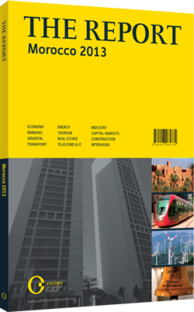A picture of health: Despite setbacks, local producers have maintained high standards
Estimated to be the second largest on the African continent after South Africa, Morocco’s pharmaceuticals sector is highly developed relative to many of its African neighbours. Currently, there are 32 pharmaceuticals plants present in the country, producing 293m units of drugs in 2011.
However, most plants are limited in size, and for this reason steps will be taken in the coming years to better consolidate production facilities.
NEED TO DEVELOP: “There is a lot of manufacturing occurring in the pharmaceuticals sector. In fact, 94% of all medicine sold in Morocco is produced here. Still, a big potential for growth remains,” Didier Perilleux, the general manager of French pharmaceuticals firm Servier, told OBG. Though local pharmaceuticals production accounted for 70% of domestically consumed medications in 2007, this figure fell to 65% between 2011 and 2012 due to growing demand for specialised medicines for cancer patients in particular.
“While there are initiatives to promote local production of these drugs, they are not sufficient because it is a costly, high-tech product, and the Moroccan market is still too small and underdeveloped to establish factories specialising in the production of certain medicines. Therefore, we prefer to import certain drugs,” says Abdelghani El Guermai, the president of the Moroccan Pharmaceuticals Industry Association. Pharmaceuticals imports rose from 6757 tonnes in 2010 to 6984 tonnes in 2011, of which a majority comes from France.
LOCAL GROWTH: Growth averages for the sector remain limited at around 3-4%, which is fairly modest in comparison with other developing countries that post averages of 10-15% annual growth. Regarding sales, consumption of medicine is also low considering the population size, as total sales stand at $1bn, putting per capita consumption at around €40 annually. In 2011 approximately 30% of medications were generic brands, despite government efforts to increase the use of generic medicines to 75% by 2013. “The political will does not exist at the Ministry of Health to really develop generics,” said El Guermai. The country has around 11,000 pharmacies and the sector provides approximately 40,000 jobs. Major players include Pfizer, Roche and Sanofi, and Pharma5. Locally owned laboratories invest an average of Dh300m (€26.67m) each year in new technology and equipment, while foreign investment remains strong. Provisional figures for foreign direct investment (FDI) indicate that the industry attracted Dh126.8m (€11.27m) of FDI expenditures in 2011, up from Dh26.4m (€2.34m) in 2010. (see Health chapter) The signing of numerous free trade agreements has not benefitted the export of pharmaceuticals, with only 8% of local production exported to European, Arab and African markets. Indeed, exports fell between 2010 and 2011 from 2762 tonnes to 2372 tonnes, as export values decreased from Dh516m (€45.8m) to Dh474m (€42.13m), according to the Moroccan Exchange Office.
CHALLENGES TO OVERCOME: Common difficulties cited include the introduction of new medicines, which can take up to two years to be approved. Some industry leaders have attributed this to difficulties in obtaining the proper licences and the fact that the prices are set for products later. The Ministry of Health is currently considering the requests of sector participants to reduce the approval waiting times to six months.
Proposals also exist to reform the price of medications to increase accessibility to drugs.
Due to the absence of a regulatory framework, a ban on R&D was instituted in 2010, stunting sector development. However, the ban is expected to be lifted in the coming months by Health Minister El Hossein El Ouardi. “There is a lot of potential in this area, and the entire scientific community is awaiting a real stimulus in biomedical research. However, it will take quite a while for Morocco to recuperate from this temporary ban on medical research. Confidence among investors must be restored first,” Perilleux told OBG.
You have reached the limit of premium articles you can view for free.
Choose from the options below to purchase print or digital editions of our Reports. You can also purchase a website subscription giving you unlimited access to all of our Reports online for 12 months.
If you have already purchased this Report or have a website subscription, please login to continue.

